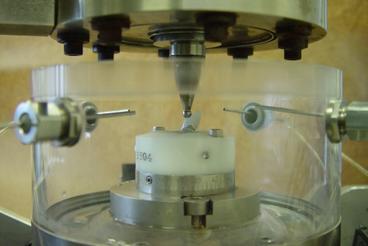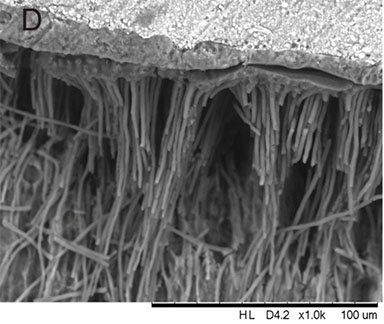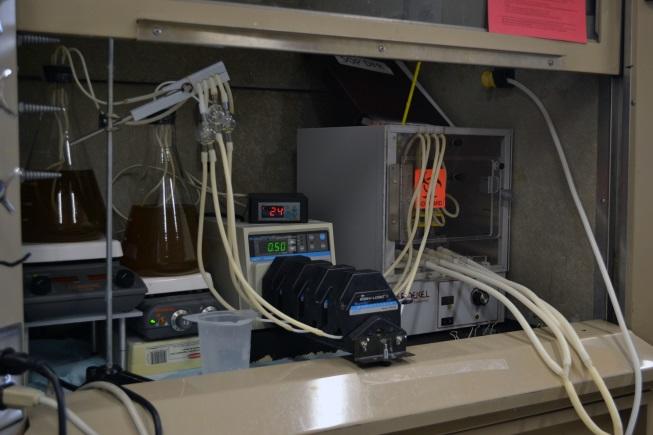Artificial Resynthesis Technology
As the name indicates, ART resynthesizes or replicates that part of the human chewing cycle in which wear occurs between teeth. From the opening position, the teeth come together with the lower arch offset to one side from the upper arch. As the lower arch slides into central alignment with the upper arch, the force between the teeth rises from zero to about three pounds and back to zero again. This part of the chewing cycle usually takes about a quarter of a second. Researchers estimate the average person goes through this functional cycle about 300,000 times in a year. ART 1, the first artificial mouth built at the MDRCBB, can complete these 300,000 cycles in less than a day.
ART 2 is a two-station version of ART 1. ART 2 was purpose-built and included many added convenience factors. One further development of ART 2 was a modification to allow three-body wear (such as occurs when food is eaten) simultaneously with two-body wear. Further developments of ART will include extensions to the digitizing process and biochemical degradation, which will build on the established physiological foundations of the Artificial Mouth Technology.
Tooth Brushing Machine
A tooth-brushing machine is available to test the resistance against wear and loss of gloss of restorative materials due to tooth-brushing.
Biofilm Challenges
Bioreactors inoculated with multi-species biofilms and pulsed with sucrose are used to simulate the biological challenges present in the oral environment. These form an essential tool for the development and assessment of preventive and therapeutic agents. The extent of tooth demineralization, for example, following such challenges can then be determined using microhardness measurement, ATR-FTIR, or micro-CT.




